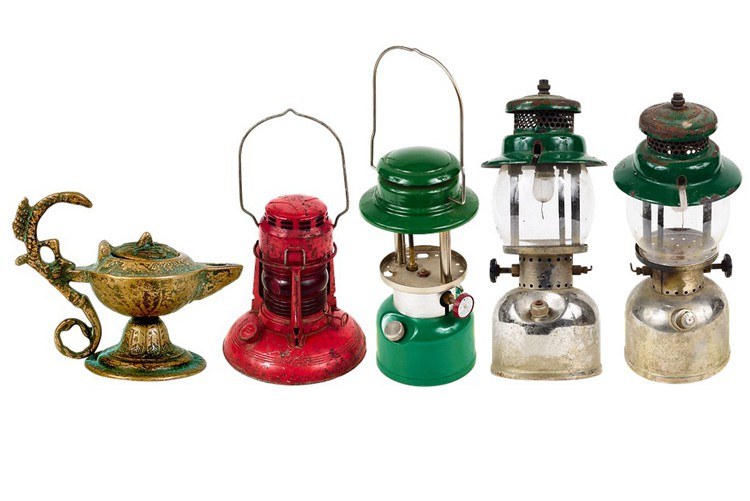Ancient oil lamps were a vital part of life in the ancient world, providing a reliable and portable source of light. They were used for a variety of purposes, including lighting homes and businesses, religious ceremonies, and public events. Oil lamps were typically made of clay, but they could also be made of other materials such as stone, glass, or metal.
Timeline of Ancient Oil Lamps
Here is a timeline of ancient oil lamps, showing the different types of lamps that were used in different archaeological periods:
Stone Age
- Paleolithic (2.6 million years ago - 10,000 BC): The earliest oil lamps were simple bowls or dishes with a wick floating in a pool of oil.
- Mesolithic (10,000 BC - 6,500 BC): More sophisticated oil lamps were developed during the Mesolithic, with spouts for the wick and reservoirs to hold the oil.
- Neolithic (6,500 BC - 3,300 BC): Oil lamps became more common during the Neolithic, and they were often decorated with elaborate designs.
Bronze Age
- Early Bronze Age (3,300 BC - 2,000 BC): Oil lamps made of bronze and other metals began to appear during the Early Bronze Age.
- Middle Bronze Age (2,000 BC - 1,600 BC): Oil lamps became more sophisticated during the Middle Bronze Age, with multiple spouts and reservoirs.
- Late Bronze Age (1,600 BC - 1,200 BC): Oil lamps with elaborate decorations became popular during the Late Bronze Age.
Iron Age
- Early Iron Age (1,200 BC - 800 BC): Oil lamps made of iron began to appear during the Early Iron Age.
- Middle Iron Age (800 BC - 480 BC): Oil lamps became more common during the Middle Iron Age, and they were often used in religious ceremonies.
- Late Iron Age (480 BC - 330 BC): Oil lamps with complex designs and inscriptions became popular during the Late Iron Age.
Classical Antiquity
- Ancient Greece (800 BC - 323 BC): The ancient Greeks used a variety of oil lamps, including disk lamps, pinch lamps, and hand lamps. Oil lamps were often decorated with figures of gods, goddesses, and heroes.
- Ancient Rome (753 BC - 476 AD): The ancient Romans used many of the same types of oil lamps as the Greeks, but they also developed new types of lamps, such as hanging lamps and votive lamps. Oil lamps were often used in temples and public buildings.
Post-Classical Antiquity
- Byzantine Empire (330 AD - 1453 AD): The Byzantine Empire used a variety of oil lamps, including disk lamps, pinch lamps, and hanging lamps. Oil lamps were often decorated with Christian symbols.
- Islamic Empire (632 AD - present): The Islamic Empire used a variety of oil lamps, including mosque lamps, desk lamps, and hanging lamps. Oil lamps were often decorated with geometric designs and Arabic calligraphy.
Ancient Oil Lamps Today
Ancient oil lamps are prized by collectors and museums alike. They are a valuable source of information about ancient cultures and technologies. Oil lamps can also be used as decorative items, and they can add a touch of history to any home.
If you are interested in learning more about ancient oil lamps, there are many resources available online and in libraries. You can also visit museums and archaeological sites to see oil lamps in person.
Ancient oil lamps were an important part of life in the ancient world, and they continue to fascinate us today. They are a testament to the ingenuity and creativity of our ancestors, and they offer a glimpse into the past.


